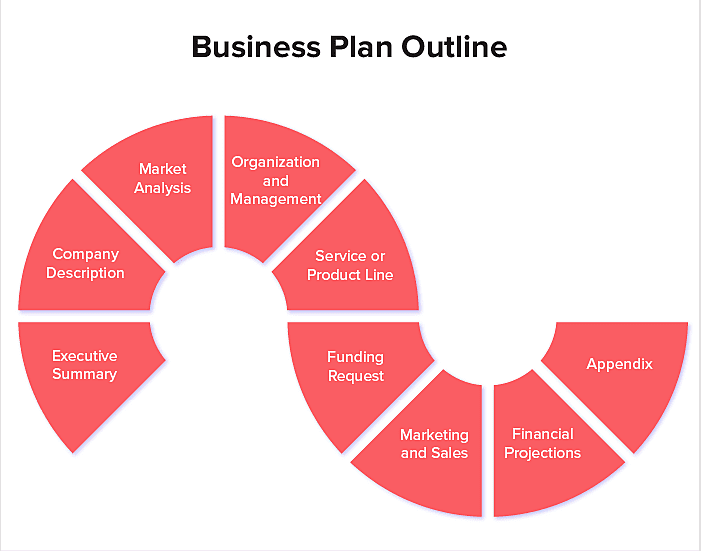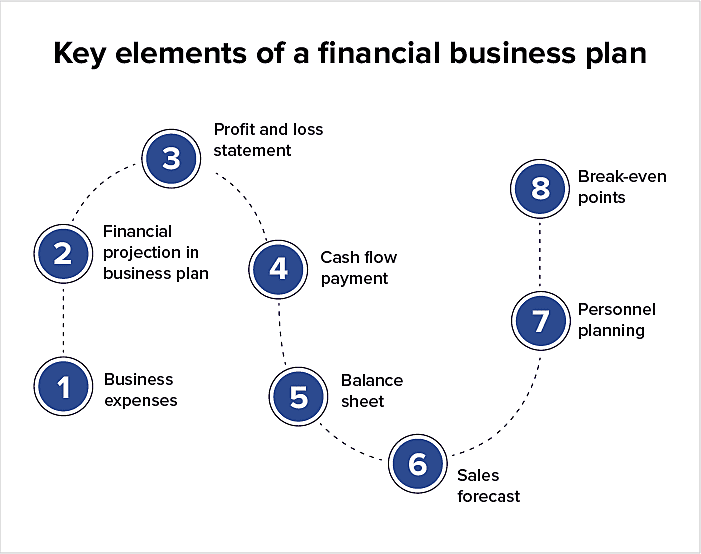
Every business plan, amidst its content list ranging from company description, product details, and marketing plan to management information, remains a descriptive content in the absence of a financial business plan.
The financial projection in a business plan is often known as the most crucial element of the document for it is what you need when you wish to get funded or are looking for a bank loan. Even when you are not looking for financing, the financial section gives you a clear view of the direction in which your business is headed.
Creating a financial plan for a company is a critical element in every guide to starting a business. So every entrepreneur, no matter whether they are establishing a business, closing their 100th business deal, or looking for funding, is required to prepare a financial section of business plan.
In the following article, we are going to dive into the answer of “how to write the financial section of a business plan” along with its multiple facets. We will dive into what a financial section in a business plan is, why it matters, and what to include.
What is financial analysis in a business plan?

Typically, the financial plan of a company is a set of documents or statistics which highlight the company’s historical financial standing and the future projections.
It usually consists of information around budgets, financial statements, funding details, etc. Information that helps get financing from investors, loans from banks, and help you budget the company’s present and future income and expenses.
Why is a financial plan for business important?
If there’s anything that the 2020 financial crisis taught us, it was that no financial leader knew how the crisis might end or would impact their business. To manage business continuity better, businesses started creating and tracking financial plans on a monthly and quarterly basis. The financial column of a business plan is necessary for not just funding reasons but also for tracking the business performance, revenue, and expenses. A financial plan for business helps with:
- Estimate your business’s future revenue and expenses, profit and loss
- Proper budgeting of expenses
- Getting finances from investors and lenders
- Strategically-planned business growth
While the benefits of having financial projections in a business plan are well established, companies are able to get the outcome only when they correctly prepare a financial section of business plan. The key step to achieving that lies in understanding its different elements.
The key elements of a financial business plan
A detailed description of a financial plan in a business plan is necessary to ensure your business will be able to pay the bills, make a profit, get funding support, and achieve its financial goals. Here are the different contents that help achieve these outcomes.

1. Business expenses
Whether your business is 10 days old or 5 years, you will have business expenses. While for startups, these can be operation costs, for established businesses, they can be fixed or variable. Irrespective of what stage your business is at and the kind of expenses you have, it is critical that you mention them in the financial section of a business plan. Here’s a list of some business expenses -
- Permits and licenses
- Rent payments
- Employee costs
- Utilities
- Insurance
- Equipment and supplies
- Advertising
2. Financial projection in business plan
These numbers deal with the future. In a typical financial projections template you will find details into revenue that you envision earning in the coming month or financial year.
If you have an existing business, all you need to do is look at the last six months or year’s revenue to make an educated guess. But if you are a startup, the same process becomes challenging. Financial projections for startups are difficult because they don’t have an established user base nor enough past data to make an estimate. The solution to this lies in creating a reasonable financial goal at par with the competitors, market, and industry.
3. Profit and loss statement
Also known as an income statement, the document explains how your business made profit over time and areas where it is making a loss. Typically in a tabular format, it lists down all the revenue models and expenses for a specific time region along with the total amount of net profit or loss made at the end of the statement.
Things that are added in the profit and loss sections of a business plan include -
- Business revenue
- Cost of sale (if you are a product firm)
- The gross margin (revenue - cost of sales)
- Business expenses
4. Cash flow payment
Every business runs on cash. Thus, it is extremely crucial to track where from and in what amount the cash in and the areas you spent them in. What is left is what you enter in the financial plan in business plan as the cash flow payment number.
Without having a clarity on where the money is coming in from, where it is going, and how you can save the cash, you will not be able to run a healthy business. It is possible for you to be very profitable but not have enough cash to pay out the expenses - this is why drafting this financial statement is so critical.
5. Balance sheet
The balance sheet is a synopsis of your company’s financial position. It answers questions like: how is your business performing, how much cash do you have in bank, how much customers’ payments are pending, and how much you need to pay out to vendors.
Things to add in the balance sheet section of financial business plan includes:
- Assets - Money in bank account, account receivable, inventory, etc.
- Liabilities - Account payable, loan repayments, credit card balances, etc.
- Equities - Owner’s shares, investors’ equity, stocks, etc.
6. Sales forecast
Sales forecast is the projection of what you think you will be earning in a stipulated time period. It is one of the most critical financial section of a business plan, especially when investors and lenders are involved in the process.
Typically, companies break down the sales forecasts in different segments which come handy in the planning and marketing activities. For example, if you have a restaurant, you would want to distinguish the forecast on the basis of lunch and dinner sales, however, a gym owner would make the difference according to the different membership types.
7. Personnel planning
This factor finds itself in either the company overview or financial sections of a business plan. In this section, you should describe every member of the management team - who they are, skills they hold, their market knowledge, and how they impact the organization. Following this, you give details of the expenses you are making behind them as a way to justify the personnel cost.
8. Break-even point
Investors are almost always heavily interested in finding the break-even point - when would the sales be equal to expenses. For determining that, companies will need to find the contribution margin. Let us tell you how through an example.
Imagine a customer pays $100 for shoes. The selling cost is $70 and the wages paid to the store staff is $5. So the contribution margin would be - $100-$70-$5 = $25. Using this formula, you will be able to calculate how high the sales revenue needs to be in order for you to reach break even.
So here were the different aspects of creating a financial plan for business. Now while these answer how to write the financial section of a business plan, it is imperative to note that the process is extremely difficult. A reason why companies turn to the best finance apps. These apps are engineered to aid financial business plans by helping entrepreneurs track their revenue and expenses.
Parting Notes
There are a number of reasons that make it imperative for businesses to make and maintain the financial section of a business plan. Reasons that vary from strategic cash flow management, smarter budget allocation, mitigation of risk, and crisis management, among others.
However, for a company to achieve these outcomes they would either need to hire skilled finance experts or follow a diy approach. While for established businesses it makes sense to invest in skilled business finance experts, startups, with their limited budget, often rely on smart finance apps for drafting the financial plan for business. We hope that the information we covered in the article would help you add financial projection in business plan in a way that is preferred by both stakeholders and prospective investors.



















